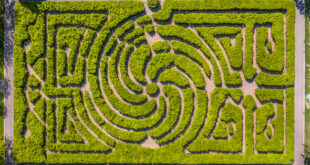Invercargill, The Southernmost City in New Zealand might seem like the back of beyond to most Aucklanders but it has a lot to offer as we discovered recently at the biannual gathering of the 69er Massey Veterinary Class.
Instead of holding their reunions at Massey University, their Old Alma Mater, to ruminate over the old times, the vets take turns at inviting their classmates and partners to their local area for small adventures of one kind or another.
This year vet Mike Brown (Brownie) from Invercargill was our genial host. His plan of action: To avoid Art Galleries, museums, public gardens or stately historic buildings.
As he put it “You can go and see these at any time”’ He wanted to give us a different taste of the Deep South.
Our reunion had been timed to coincide with the beginning of the Bluff oyster season and Mike had popped a dozen fresh oysters in the fridge of our motel unit as a celebratory gesture. This set the tone for a great weekend.
Our first trip was to the Velodrome, the only indoor one in New Zealand. It stands next to the ill-fated Stadium Southland whose roof collapsed after a massive Southland snowstorm in 2010 and is still in the process of being fixed.
I’m not into sport and my experience of riding a bicycle is limited to leisurely rides around the block. So I expected to be bored. But the sight of a bunch of keen young cyclists racing around the track in the New Zealand age group Championships at breathtaking speed was riveting. How they managed to stay on this circular track which veers at an angle of 43% remains a mystery to me.
For an hour we were walked and talked around the Velodrome. Around its walls the history of cycling in Southland is recorded through displays of photographs, old bicycles, jerseys and walls on which homage is paid to Southland champions. A fascinating bit of local history.

A visit to one of the Blue River Dairy Farms was a different kind of experience. Here we watched as a large flock of sheep was herded into a state of the art sheep milking shed. Above each sheep a tiny LED screen lit up to show how much milk each sheep was producing.
The milk is made into a range of sheep cheeses (halloumi, feta, pecorino and aged cheddar) as well as baby milk powder and ice-cream much of which is exported around the world. Potentially there is a huge market, especially in Asia where large numbers of people are dairy lactose intolerant.
In the farm shed we sat on hay bales and feasted on grilled halloumi cheese, bread rolls, salad, and barbecued lamb which is fed solely on milk, not grass.
That evening we all scrubbed up for the formal dinner at the Ascot Hotel where we indulged in all the good seafood which this region has to offer: oysters of all kinds, au naturel, battered and served with an Asian Sauce as well as nuggets of battered blue cod, paua fritters and crayfish.

It was an early start the next morning. We donned our merinos, warm jackets and scarves and headed for the Stewart Island Ferry. Crossing by sea can be a fearsomely choppy ride but the weather gods stayed on our side. The ocean was reasonably calm, albatross with wingspans of over 2 metres circled overhead.
On arrival we headed for the South Sea Hotel for a good coffee and had time for some window shopping at the merino shop (gorgeous but pricey) before heading out for a tour of Ulva island with the Southern Express.
On the way landmarks were pointed out where missionaries, whalers and traders had once landed. We watched sea lions sunning themselves at a distant beach.

On Ulva Island, a wildlife sanctuary, it was a different and peaceful world as we walked quietly under a canopy of rata, totara and miro and listened to birdsong. Our guide expertly identified the native flora and fauna and told how it is constantly under threat from rats who swim ashore or hitch a ride on incoming boats.
 On the leafy track a South Island robin hopped down and posed for a photo opportunity. We sighted other birds including kaka, tuis and brown creepers but the kiwi being a nocturnal bird remained hidden from sight.
On the leafy track a South Island robin hopped down and posed for a photo opportunity. We sighted other birds including kaka, tuis and brown creepers but the kiwi being a nocturnal bird remained hidden from sight.
On the way back from Ulva island there was time for a quick visit to an Oyster Factory. Almost as fast as the oysters were tipped out from huge bags onto the production line they were expertly prised open. Shucking oysters is a seasonal job but workers can make good money if they are fast.
The following morning we rummaged in our motel fridge. The oysters were gone but there was enough muesli, yoghurt and fruit to have a shared breakfast with some of our friends out on the patio in the wintry sun. Then it was time to say our goodbyes.
Thanks to Brownie we'd had a fascinating glimpse into what Southland has to offer. And it had been a great way to rekindle old memories, create new ones, and to keep friendships alive.










Join the Discussion
Type out your comment here:
You must be logged in to post a comment.